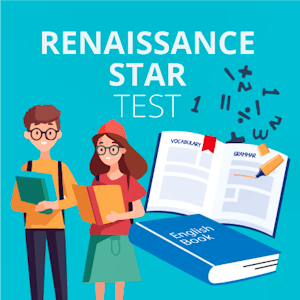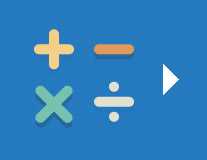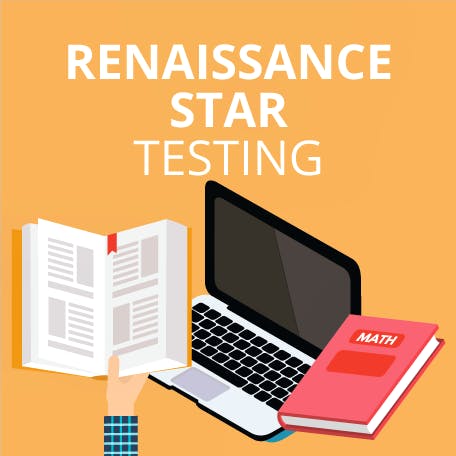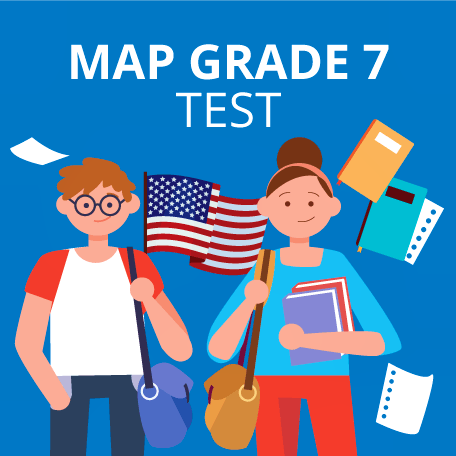Understanding Your Kid’s Renaissance Star Test Scores – A Complete Guide
Updated November 29, 2023

- What Is the STAR Test?
- What Are the STAR Test Scores?
- The STAR Assessment Scores Explained
empty
empty
empty
empty
empty
- When Do You Get Your STAR Scores?
empty
empty
empty
empty
- How to Improve Your Child’s STAR Assessment Scores
- Frequently Asked Questions
- Final Thoughts

The STAR assessments utilize a scoring system comprising scaled scores ranging from 0 to 1,400.
These scores reflect a student's proficiency level in subjects such as reading and math.
Benchmark categories provide descriptive labels for performance levels, while percentile rank compares a student's performance to a national reference group.
Additionally, grade equivalent scores and domain scores offer insights into grade-level equivalence and specific skill areas.
The STAR Assessment can play a crucial role in evaluating your child’s academic ability and guiding educational strategies.
Understanding its scoring system, test format and significance is important for parents and educators alike.
This article aims to provide comprehensive insights into the STAR Assessment, including its purpose, score interpretation and effective strategies to help children excel in these standardized tests.
What Is the STAR Test?
The Standardized Testing and Reporting (STAR) tests are a series of tests used in schools to assess students' academic performance.
These tests aim to measure students' proficiency in various subjects, including:
- Early Literacy – Grades K to one, and grades two and three if needed
- Mathematics – Grades two to seven and in some cases, grade one
- Reading – All grades
The topics assessed in each test are:
| Early Literacy | Mathematics | Reading |
|---|---|---|
| Alphabetic Principle | Numbers and Operations | Word Knowledge and Skills |
| Concept of Word | Algebra | Comprehension Strategies |
| Visual Discrimination | Geometry and Measurement | Constructing Meaning |
| Phonemic Awareness | Data Analysis | Analyzing Literary Text |
| Phonics | Statistics | Understanding Author’s Craft |
| Structural Analysis | Probability | Analyzing Argument |
| Vocabulary | Evaluating Text | |
| Sentence-Level Comprehension | ||
| Paragraph-Level Comprehension | ||
| Early Numeracy |
The assessments are typically administered throughout the school year and serve as a tool for educators and policymakers to gauge the effectiveness of the education system.
They are multiple-choice questions and computer-adaptive, meaning the questions adjust to your child’s ability, and take approximately 20 minutes to complete.
The tests your child takes depend on their grade and aptitude for that topic.
The STAR tests are also used to assess for Gifted and Talented programs.
As such, it is important to understand the STAR assessment scores so you can better support your child through their education.
What Are the STAR Test Scores?
The STAR test scores use a scoring system that provides scaled scores for each subject area, such as STAR Reading scores and STAR Math.
These scaled scores range from 0 to 1,400, with higher scores indicating a higher level of proficiency in the subject.
Scaled scores are calculated based on the difficulty of the questions and the number of correct answers.
STAR Reading Scores Chart
| Grade | Percentile | Scaled Score |
|---|---|---|
| One | 10/50/90 | 71/95/269 |
| Two | 10/50/90 | 107/274/465 |
| Three | 10/50/90 | 215/392/613 |
| Four | 10/50/90 | 287/487/774 |
| Five | 10/50/90 | 363/592/955 |
| Six | 10/50/90 | 439/716/1,185 |
| Seven | 10/50/90 | 474/843/1,302 |
| Eight | 10/50/90 | 536/942/1,335 |
| Nine | 10/50/90 | 606/1,044/1,343 |
| 10 | 10/50/90 | 637/1,118/1,344 |
| 11 | 10/50/90 | 652/1,170/1,344 |
| 12 | 10/50/90 | 683/1,226/1,345 |
2025 STAR math test score chart
| Grade | Percentile | Scaled Score |
|---|---|---|
| One | 10/50/90 | 215/327/449 |
| Two | 10/50/90 | 349/458/562 |
| Three | 10/50/90 | 430/547/646 |
| Four | 10/50/90 | 497/620/724 |
| Five | 10/50/90 | 552/680/791 |
| Six | 10/50/90 | 607/741/858 |
| Seven | 10/50/90 | 627/773/896 |
| Eight | 10/50/90 | 642/803/938 |
| Nine | 10/50/90 | 660/811/946 |
| 10 | 10/50/90 | 658/816/953 |
| 11 | 10/50/90 | 689/833/977 |
| 12 | 10/50/90 | 704/848/989 |
The STAR Early Literacy scores range from 300 to 900.
It's important to note that these score ranges are approximate, and the specific scale may vary slightly depending on the version of the STAR tests used.
Additionally, score averages for different grade levels may change over time as the tests and curriculum evolve.
Parents and educators should refer to the most current guidelines and resources provided by the educational authorities in their region for the latest information on STAR testing scores.

The STAR Assessment Scores Explained
Your child’s scorecard will show several different scores.
Here is a breakdown of what you can expect to see.
Scaled Score
The scaled score is the primary score provided in the STAR test and typically ranges from 0 to 1,400.
A higher scaled score indicates a higher level of proficiency in the assessed subject (for example, reading or math).
This score is used to measure a student's performance in relation to grade-level expectations.
Benchmark Categories
Benchmark categories are descriptive labels that help educators and parents understand a student's performance level.
These categories are often associated with specific scaled score ranges:
- Level 1 – Standard not met
- Level 2 – Standard nearly met
- Level 3 – Standard met
- Level 4 – Standard exceeded
These categories provide a quick way to gauge a student's performance compared to grade-level standards.
Percentile Rank
The STAR test scores percentiles represent where a student's score falls in comparison to the scores of a nationally representative group of students who took the same assessment.
For example, if a student has a percentile rank of 75, it means their score is equal to or higher than 75% of students in the reference group.
This score provides insight into how a student's performance compares to peers on a national scale.
Grade Equivalent
The grade equivalent score is an approximation of the grade level at which a student's performance is equivalent to the average performance of students at a particular grade.
For instance, if a student receives a grade equivalent score of "5.2" it means their performance is similar to that of an average student in the second month of fifth grade.
This score helps parents and educators understand the grade-level appropriateness of a student's performance.
Domain Scores
Domain scores break down a student's performance into specific skill areas within a subject (for example, reading comprehension, vocabulary or algebra).
These scores provide a detailed view of a student's strengths and weaknesses within the assessed subject, helping educators tailor instruction to address specific skill gaps.
For a more comprehensive and detailed explanation of STAR Assessment scores, you can refer to the official STAR Assessment website.
When Do You Get Your STAR Scores?
The timing and availability of STAR assessment scores can vary depending on the specific administration and policies of the school or educational institution.
As the tests are computer-based, results are calculated immediately and delivered in one of the following ways:
Paper Reports
In some cases, schools may provide paper score reports to students or parents.
These reports may be sent home with the student or distributed during parent-teacher conferences.
Online Portals
Many schools and districts have online portals or platforms where parents and educators can access assessment results.
These portals often require secure login credentials, and scores are made available electronically.
Equally, the Renaissance Home Connect website also provides parents with access to their child’s test scores.
Email or Mail
Some schools may send score reports via email or regular mail to parents or guardians.
This method ensures that parents receive the scores in a timely manner.
Parent-Teacher Conferences
In some schools, teachers may schedule parent-teacher conferences shortly after the assessments are completed.
During these conferences, educators may share and discuss the math and STAR reading test scores with parents, offering insights into their child's performance and potential areas for improvement.
It's important for parents to check with their child's school or teacher regarding the specific procedures for accessing STAR Assessment scores, as the methods and timing may vary.
Additionally, if a child takes multiple STAR Assessments throughout the school year, updated scores may be provided periodically to track their progress.
If you want 12-month access to all the practice resources for this test, our partner TestPrep-Online.com offers a Family Membership.
Family Membership gives you access to all the TestPrep-Online resources for the next 12 months. You will also get two separate accounts, which can be very helpful if you have two children preparing for their tests.
How to Improve Your Child’s STAR Assessment Scores
Improving your child's STAR assessment scores involves a combination of preparation, support and a positive approach to learning.
Here are some tips to help your child perform at their best on the STAR assessments:
Step 1. Understand the Test Format
Familiarize yourself and your child with the format and structure of the STAR Assessment.
Understanding what types of questions to expect and how the test is timed can help reduce anxiety.
Step 2. Take Online Practice Tests
Online practice tests are a valuable tool to prepare for the STAR Assessment.
Many educational websites and platforms offer practice tests that simulate the actual testing experience.
Step 3. Make Learning Fun
Learning should be enjoyable.
Encourage your child to explore various subjects through games, books and engaging activities.
Foster a love of learning by making it a positive and exciting experience rather than adding excessive pressure.
Step 4. Diverse Reading Materials
Encourage your child to read a variety of materials, including books, newspapers, magazines and online articles.
Exposure to different types of text can improve reading comprehension and vocabulary.
Step 5. Balanced Study Schedule
Avoid cramming for the STAR Assessment.
Instead, establish a balanced study schedule that allows your child to review concepts gradually over time.
Consistency is key to retaining knowledge.
Step 6. Adequate Rest
Ensure that your child gets enough sleep, especially on the nights leading up to the test.
A well-rested mind is better prepared to absorb information and perform well on the assessment.
Step 7. Open Communication With Teachers
Don't hesitate to communicate with your child's teachers about their performance and any specific areas that may need improvement.
Teachers can provide valuable insights and tailored recommendations to address your child's needs.
They can also provide insights on how to understand resources such as a 2025 STAR math test score chart, STAR reading scores chart or STAR Early Literacy score chart, as well as specific scores like STAR test scores percentiles.
Step 8. Stay Positive and Encouraging
Maintain a positive and supportive attitude throughout the preparation process.
Celebrate your child's achievements, no matter how small, and reassure them that you are there to support their learning journey.
STAR test scores provide insights into students’ academic performance. The scaled score indicates proficiency levels, while benchmark categories offer descriptive labels for performance.
Percentile rank shows how a student's score compares to a national group. Grade equivalent scores suggest grade-level equivalence and domain scores break down skill areas within subjects.
The best score on a STAR test varies depending on the specific subject being assessed and your child’s grade.
For example, what is a good score on the STAR math test may be different to a good score on a STAR reading test score chart.
You can check your STAR reading score by accessing the Renaissance Home Connect portal or asking your teachers.
To find 2025 STAR scores, check with your child's school or district for specific procedures. Typically, scores are available through paper reports, online portals requiring login credentials or via email or mail. Schools might discuss scores during parent-teacher conferences, and online platforms could offer explanations and suggestions for educational progress.
While STAR test results are calculated immediately, parents may have to wait several weeks to access them. Scores might be accessible through various channels like paper reports distributed at school, email, regular mail or online portals with secure logins. Parent-teacher conferences may also provide opportunities to discuss and understand results.
STAR scores evaluate academic proficiency and guide educational strategies, helping educators tailor instruction to address specific needs. They can also impact school and district evaluations, influencing resource allocation and educational policies.
Additionally, they measure progress over time, tracking educational development, and are sometimes used for assessing Gifted and Talented students.
This indicates where a student's score stands compared to a nationally representative student group who took the same assessment. A percentile rank of 80 means the student's score is equal to or higher than 80% of the reference group. This provides context for understanding student performance relative to peers nationwide.
Final Thoughts
Remember, while it's essential to prepare for the STAR Assessment, it's equally important to maintain a healthy balance between academics and a well-rounded childhood.
Keep the learning process enjoyable, and focus on your child's overall growth and development.
By following the tips in this article and fostering a positive learning environment, you can help your child perform well on the STAR Assessment and achieve their educational goals.












